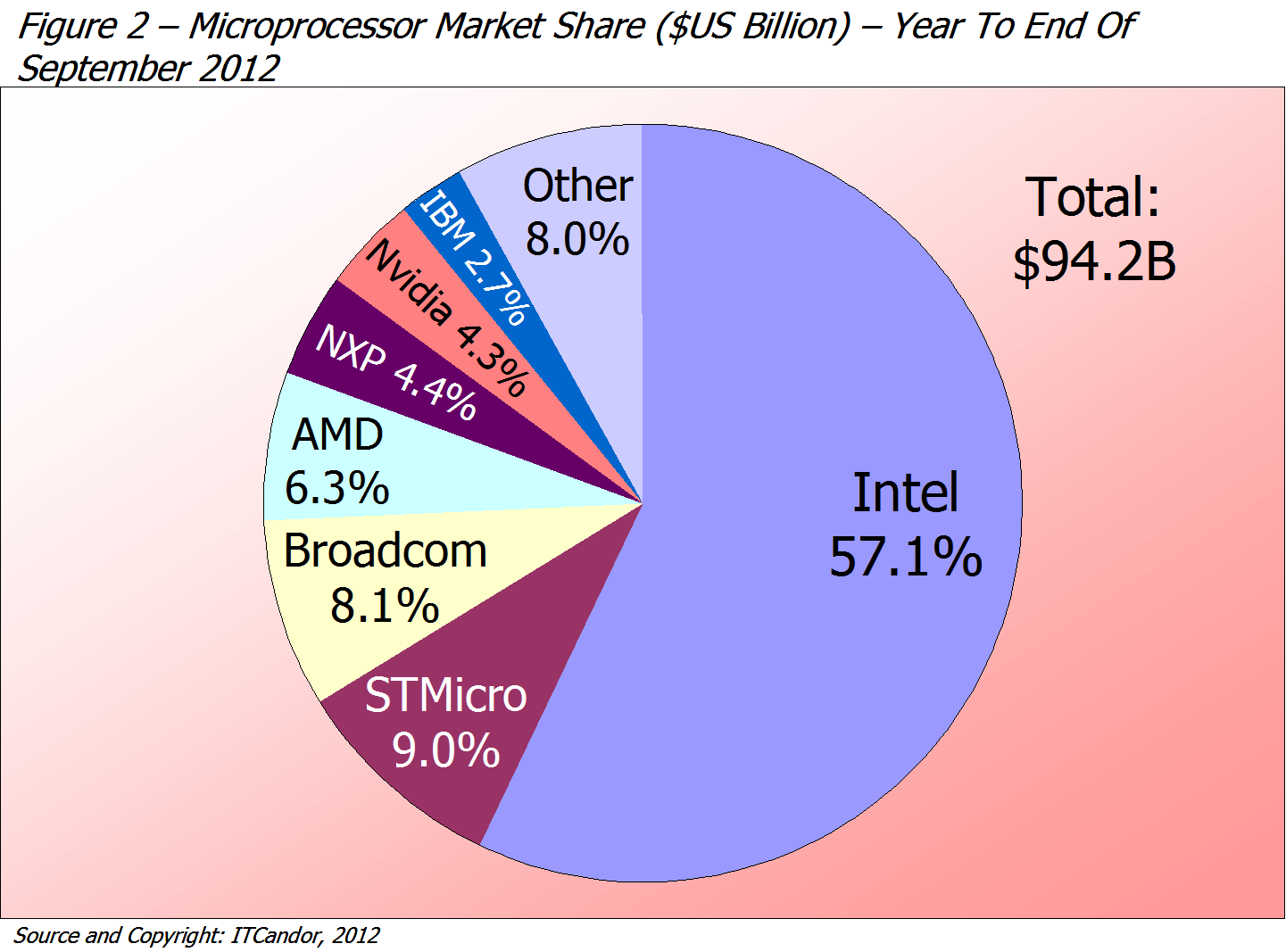Intel’s “Just Say Yes” program and dynamic selection of the right push, pull, or hybrid model
Intel’s business revolves around manufacturing technology
and operations. Intel factories turn raw silicon wafers into complex and
advanced integrated circuits. These integrated circuits are either delivered to
customers as finished goods or subsequently used in the assembly of products
such as CPUs, graphics processing units (GPUs), memory units, communication controllers,
motherboards, wireless devices, and solid-state drives (SDDs). It holds more
than 50% market share for microprocessors.
Source:
Source: ITCandor, 2012
Approximately 30 global warehouses handle the warehousing and
delivery to customers of the products, shipping about 1 million PC units per
day and fulfilling over 750,000 orders per year (Statistics of January 2012).
Definitely efficient supply chain management is critical to Intel’s
success. Intel’s IT plays crucial role in maintaining the supply chain. In 2005
Intel executives received direct feedback from customers about the
dissatisfaction in order fulfillment process. In response to this, Intel
launched “Just Say Yes” program.
In the beginning of the program, IT data analytics were used
to develop awareness of the steps involved in the current processes and create
a baseline understanding of the situation. The data points included the number
of times a given order changed—an average of six times—and what percentage of
orders shipped without changes—only 1 percent. Combining the knowledge from the
data analytics with customer feedback, the supply chain organization defined for
elements of the goal
• Improve Intel’s
ability to respond quickly and positively to change order requests
• Respond to
customers within 24 hours with a committed dock date (CDD), which entailed committing
to a date for product availability and having products available in the
warehouse within three days
• Reduce inventory
levels
• Reduce errors in
demand forecasting
Just Say Yes program evolved in later years by setting up new goals and
implementing innovative strategies. It led to achieving a better Inventory
Management process. Simulation and modeling capabilities helped planners to predict
inventory needs and helped to decrease the likelihood of excess inventory. Intel
could implement inventory optimization to right-size safety stock buffers
across the entire supply chain eliminating complex interdependencies, long lead
times, demand uncertainty, and supply volatility. All efforts resulted in reduction
of excess inventory and an improvement in customer service levels.
http://www.youtube.com/watch?v=EWiqyf631cg
http://www.slideshare.net/loracecere/supply-chain-insights-global-summit-2013-leadership-in-action-tony-romero-from-intel-corporation
Another detailed discussion of Intel's inventory management strategies:
Results:
-
50% improvement in ramping up a new
manufacturing process,
-
65% shorter lead times
-
50% faster order to delivery
-
300% faster response to customers
-
32% Inventory
reduction
-
16-21% productivity increase.
Continuing with the
make-to-stock (push) model for traditional CPU product, Intel is implementing
pull and hybrid models to support some new product market segments.
Pull model offers the below benefits:
• Responsiveness increases
• Reduced inventory and
product obsolescence in new and changing markets that require higher SKU counts
• Customer
responsiveness levels can vary
Intel also implementing processes
to dynamically select the right push, pull, or hybrid model based on product
type and product life cycle.
Primary Source: IT@Intel White Paper: Transforming Intel’s Supply Chain to Meet Market Challenges
http://www.intel.com/content/dam/www/public/us/en/documents/best-practices/transforming-supply-chain-to-meet-market-challenges.pdf

No comments:
Post a Comment
Note: Only a member of this blog may post a comment.